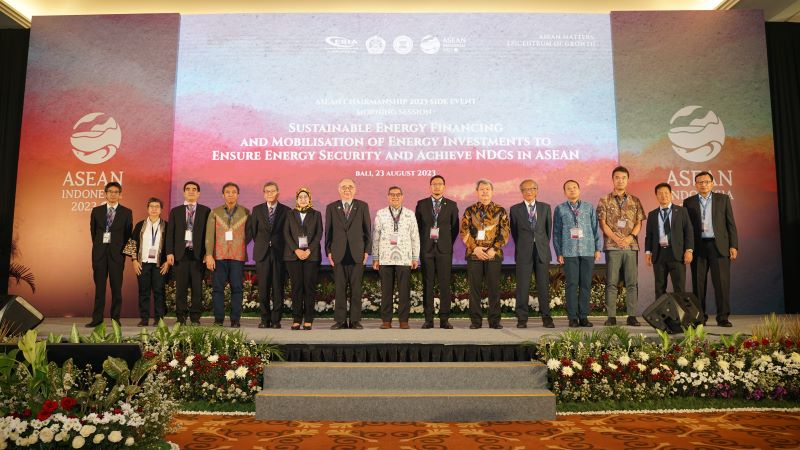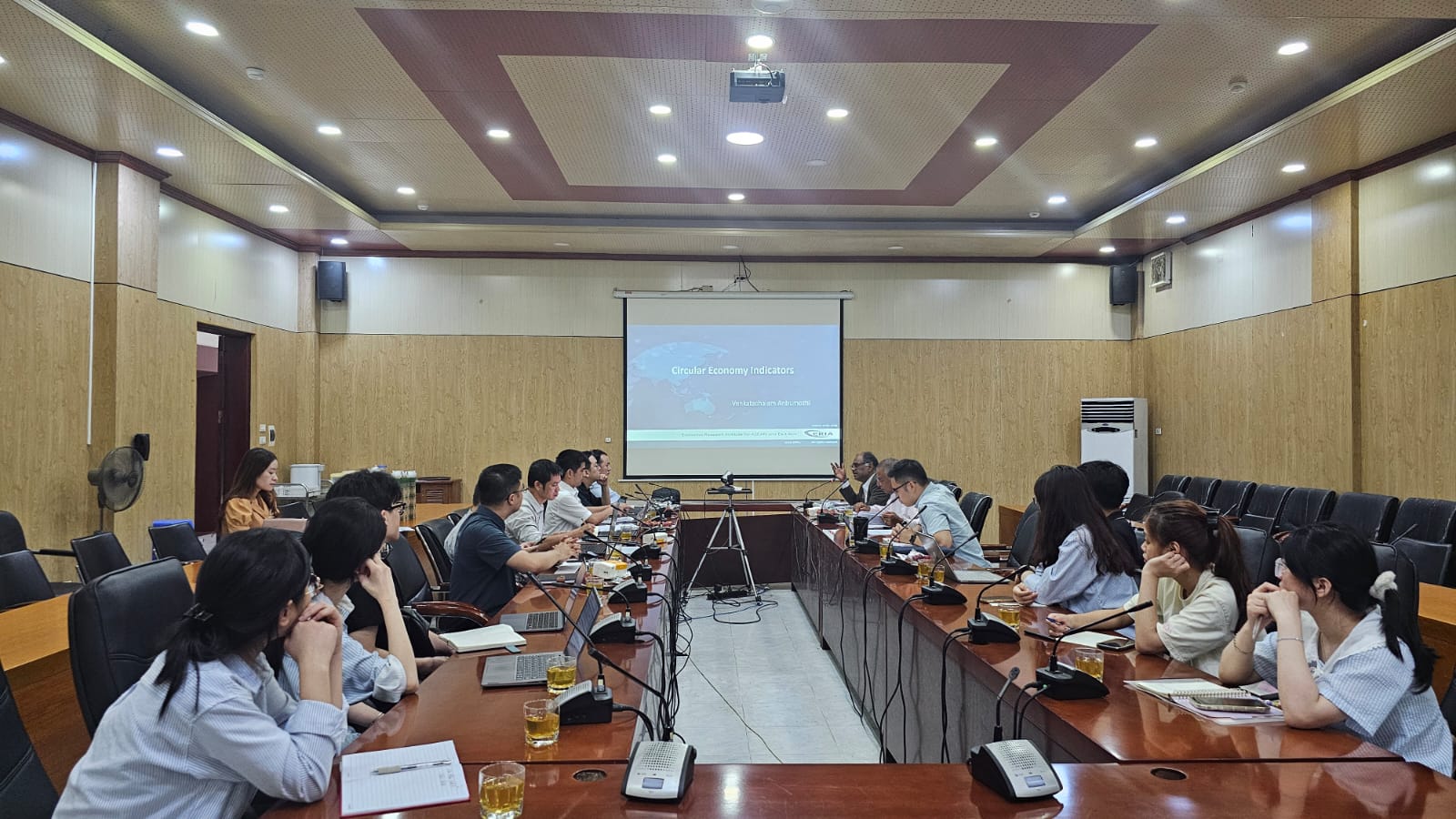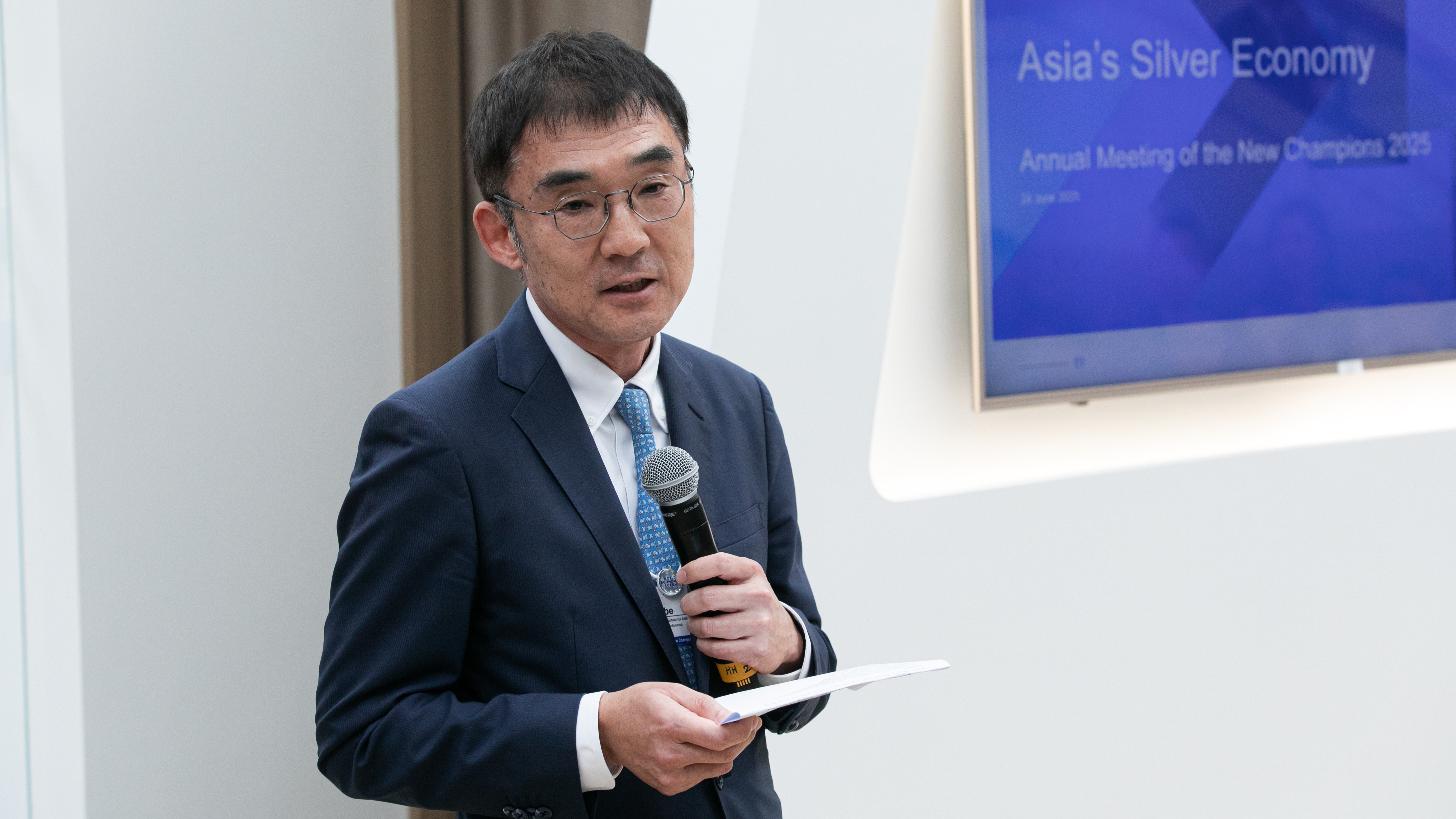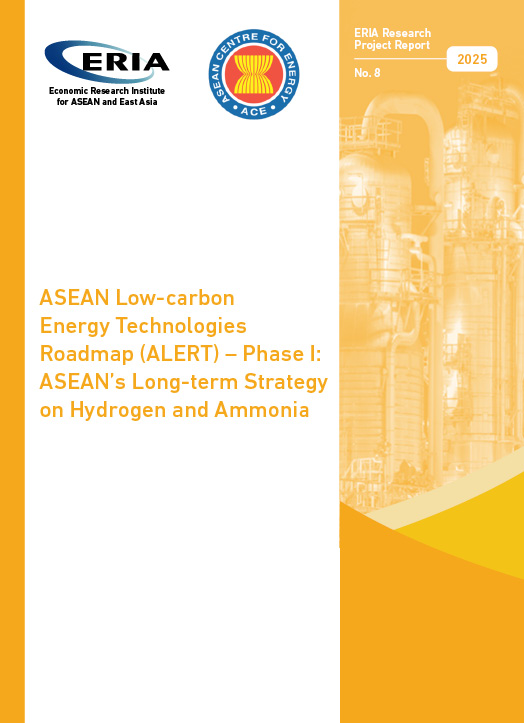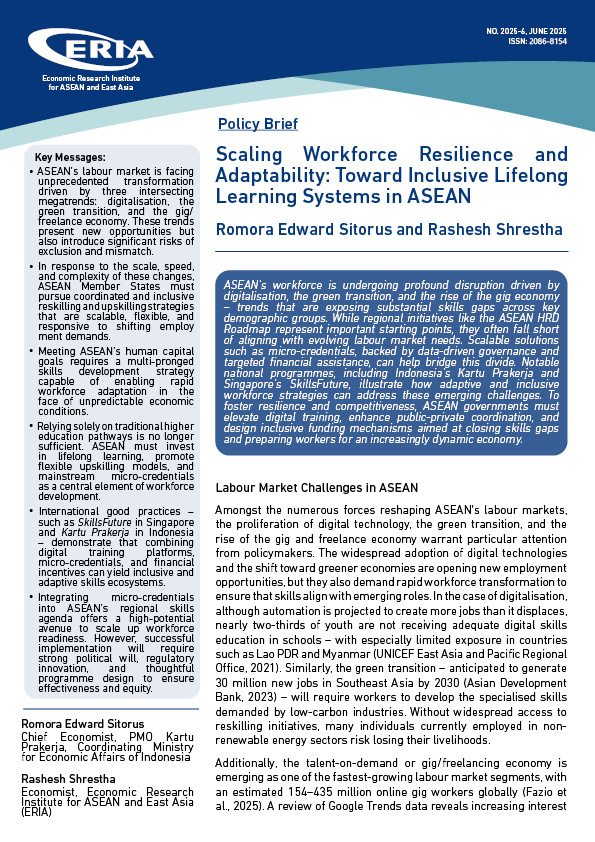‘Sustainable Energy Financing and Mobilisation of Energy Investment and Advancing CCUS Implementation for Energy Security in ASEAN’
Date:
23 August 2023Category:
News, Press ReleasesTopics:
EnergyShare Article:
Print Article:
Bali, 23 August 2023: The Economic Research Institute for ASEAN and East Asia (ERIA) is delighted to announce the coordination of two essential side events during the ASEAN Energy Business Forum (AEBF) 2023 on August 23, 2023.
Supported by the ASEAN Centre for Energy (ACE) and hosted by the Ministry of Energy and Mineral Resources of Indonesia, the first event is centred on ‘Sustainable Energy Financing and Mobilization of Energy Investments,’ and the second event is on ‘Advancing CCUS Implementation for Energy Security in ASEAN.’
Key messages from the event of ‘Sustainable Energy Financing and Mobilisation of Energy Investment in ASEAN' are:
As ASEAN strives to ensure energy security and achieve the Nationally Determined Contributions (NDCs) outlined in the Paris Agreement, it is paramount to address these pressing challenges through collaborative efforts and strategic policy discussions. ASEAN, home to a rapidly growing population and diverse economies, faces a significant increase in energy demand. Under the baseline scenario of the 7th ASEAN Energy Outlook (AEO7), energy demand in the region is expected to triple by 2050 from the 2020 level. Meeting this surging demand while concurrently reducing carbon emissions necessitates an immediate focus on sustainable energy financing.
From the outset, and amongst many other important issues to address for carbon neutrality and net-zero emissions, appropriate financing energy transitions and choosing the right technologies will help countries to find pathways to reach net-zero emissions by 2050 or beyond depending on each countries’ circumstance.
Securing investment for financing energy infrastructure that is sufficient to support the transition from the current heavy reliance on fossil fuel towards a future cleaner and more resilient energy system is a great challenge of our time. This challenge includes how to ensure a smooth energy transition that leaves no one behind and takes into consideration energy affordability, accessibility, and energy security, while simultaneously achieving the Paris Agreement goal of keeping temperature increase to well below 2 degrees Celsius, preferably to 1.5 degrees Celsius, compared to pre-industrial level.
As the COVID pandemic is over and most economies have started to recover, rebound energy demand has put more pressure on how to secure the appropriate energy supply. While investing in clean fuels and renewable energy are critical for future clean energy systems, the region should not overlook transition fuels such as natural gas and other important transition technologies that can support the goal of carbon neutrality by 2050.
Seeking multiple pathways towards carbon neutrality is key for the ASEAN region. In this regard, ERIA has published research on important carbon neutrality challenges in ASEAN including: the diversity of mitigation pathways towards carbon neutrality, importance of considering all available technologies and fuels, the crucial role of natural gas and transition technologies, and underpinning finance. ERIA has released ‘The Technology List and Perspectives for Transition Finance in Asia (TLPTFA)’ which aims to support smooth energy transitions in developing Asia with realistic approaches that can facilitate many countries in Asia to embark on pathways to carbon neutrality.
ERIA has classified three stages of technology development to support the shift to net-zero as follows:
- Early decarbonization transition technologies: These technologies involve the immediate switching from coal to natural gas power generation, waste to energy power plants in the power sector, and leak detection (LDAR) for fugitive emission reduction in upstream. These technologies can be deployed in the early phases of a country’s transition pathway and may be retired before reaching net-zero emissions.
- Partial emissions reduction transition technologies: These technologies include the co-combustion of coal-fired power generation with biomass, or ammonia, and the co-combustion of gas-fired power generation with hydrogen fuel. The share of biomass, ammonia, and hydrogen to the power generation mix must increase over time. For the upstream sector, we suggest introducing the use Electrification in Gas Production and Processing.
- Deep decarbonization transition technologies Those technologies include Carbon Capture, Utilization, and Storage (CCUS) combined with coal/gas power generation, blue hydrogen, blue ammonia, and CCUS in gas processing. It is very important to note that CCUS has been selected based on six criteria: emission impact, affordability, reliability, Lock-in Prevention which highlight the emission reduction plan, Do-no-Significant Harm, and social consideration.
- Fast-tracking energy finance for the energy transition is critical to ensure that countries can secure enough funds to finance their energy transformation. Annual investment in renewables and clean energy has grown steadily since the 2015 announcement of the Paris Agreement on Climate goal. ‘The ASEAN Renewable Energy Outlook 2021’, published by the ASEAN Centre for Energy, estimates that the region will require around US$360 billion of investment, in the power sector only, to achieve the targets of 23% renewable energy share in Total Primary Energy Supply (TPES), as well as a 35% share in installed power capacity by 2025. In 2023, an estimated US$1.7 trillion is invested in renewables and clean technologies, while US$1 trillion is invested in fossil fuels. The increasing share of investment in clean energy has outpaced fossil fuel investment for the first time between 2016 to 2023. This new ASEAN trend reflects global investor sentiment towards cleaner energy systems. However, attention will need to be made to how developing countries can finance the energy transition. ERIA is advocating appropriate energy transition financing focussing on the transition technologies outlined above.
Key messages from the event ‘Advancing CCUS Implementation for Energy Security in ASEAN’
There is no silver bullet for saving our future planet from global warming, and to prevent atmosphere temperature rising to 1,5 degrees centigrade from the pre-industrial period. To pursue the pathway to carbon neutrality, we need to consider all available technology options and all possible carbon off-setting mechanisms to reduce emissions, while at the same considering energy affordability, accessibility, and energy security. As many countries in ASEAN will still depend on fossil fuels for the foreseeable future, it is very important to have fast deployment of Carbon Capture and Utilization and Use (CCUS) technologies across ASEAN region and Carbon Capture and Storage (CCS) as soon as possible, with the aim of commercializing this technology by 2030.
Globally, we witnessed a significant increase of CCS projects in 2022 - almost doubling from 2021. Total CCS project capacity in 2022 reach 244 million-ton capture capacity spread over 196 CCS facilities worldwide in more than 20 countries. According to the Global CCS Institute, the world will need to increase the CCUS capacity to more than a hundredfold of current CCS capacity to achieve the net emission target by 2050.
ASEAN has great potential for successful deployment of CCUS. The low hanging fruit of CCUS projects in ASEAN are CCUS for Enhanced Oil Recovery (EOR) and Enhanced Gas Recovery (EGR). Most ASEAN member countries, except Singapore, have potential storage capacity for CCUS and CCS either in depleted oil and gas reservoirs or in saline aquifers. Most oil producing countries in ASEAN have considered deployment of CCS EGR and CCS EOR. Successful implementation of EGR and EOR will accelerate the deployment of CCS or even Direct Air Capture and Storage (DACS).
A recent survey found that existing regulations may be suitable as a base for a regulatory framework governing CCUS operation. A number of countries are developing CCS specific regulation. Indonesia led the effort by issuing regulations on CCS operation in active oil and gas working acreage (the term used to describe the lands subjects to an oil and gas lease) this year (2023). In addition, three countries have put CCUS ion their development agendas to meet their NDCs under Paris Agreement namely Indonesia, Malaysia, and Thailand. It is expected that public and private partnerships will develop CCS projects as open access Carbon Capture and Storage utilizing depleted Arun Field reservoir.
Although ASEAN is home to strong fundamental factors for successful deployment of CCS, a lot of homework needs to be done to make CCUS an effective means to meet our goal to achieve decarbonisation in ASEAN. In ASEAN, the current storage capacity data is quite general, at the basin or field level. To obtain accurate information about storage potentials, more detailed data is necessary for project evaluation and more thorough analysis. Regarding regulation, there are gaps between existing regulations and what is needed to effective regulate a smooth CCUS deployment in ASEAN. Risk sharing; cross border transportation; monitoring, reporting and verification; and emission trading need to be addressed in the close future.
Finally, financing is still one of the most critical issues for CCUS development and deployment in ASEAN. The Government of Malaysia has issued incentives for CCUS development. Thailand also has issued a corporate tax exemption for CCUS developers. In addition, the Joint Credit Mechanism (JCM) has indicated the availability of JCM for CCUS. However, guidelines still need to be developed. Although the financing framework for CCUS and CCS will still be evolving for some time, it is important to ensure that public and private partnerships are encouraged to finance CCUS in the foreseeable future. Therefore, de-risking mechanisms along the CCUS value chain is key for financing CCUS. Achieving an affordable price of CCUS will require cooperation within ASEAN and international support.
